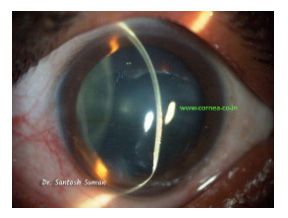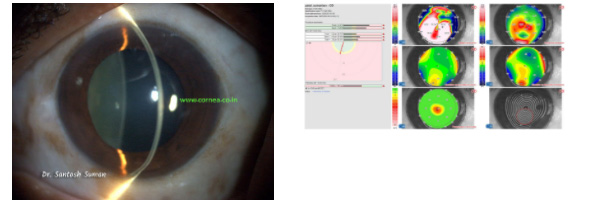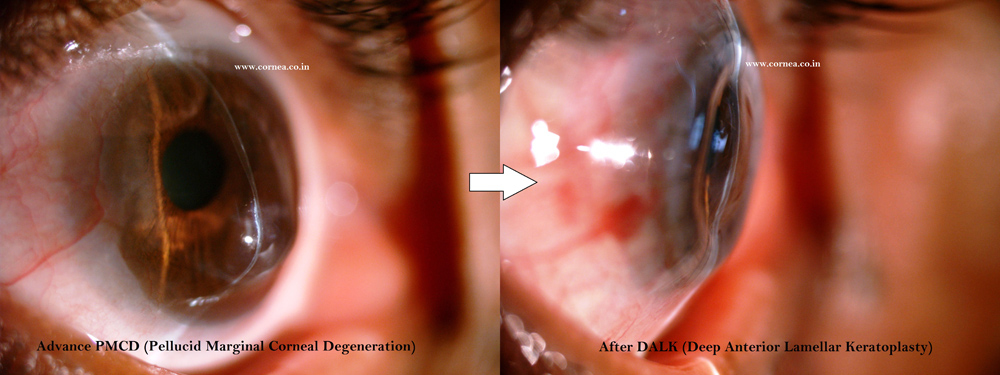1. What is “Pellucid Marginal Corneal Degeneration” or PMCD ?
 PMCD is a rare ectatic disorder (means forward bulging of cornea) which typically affects the inferior peripheral cornea in a crescentic fashion. The condition is most commonly found in males and usually appears between the 2nd and 5th decades of life. Prevalence and etiology of PMCD is largely unknown.
PMCD is a rare ectatic disorder (means forward bulging of cornea) which typically affects the inferior peripheral cornea in a crescentic fashion. The condition is most commonly found in males and usually appears between the 2nd and 5th decades of life. Prevalence and etiology of PMCD is largely unknown.
2. How does PMCD present?
Ocular signs and symptoms of PMCD differ depending upon the severity of disease. Usually they are diagnosed when they have rapidly progressing cylinder power of glasses. Visual signs and symptoms include longstanding reduced visual acuity or increasing against-the-rule irregular astigmatism leading to a slow reduction in visual acuity.
In rare cases, patients may present with a sudden loss of vision and excruciating ocular pain due to corneal hydrops (rupture of inner layer of cornea) or spontaneous perforation (rupture of all layers of cornea)

3. What are the treatment options for PMCD ?
Spectacle correction usually fails early in the course of pellucid marginal degeneration (PMD), as the degree of irregular astigmatism increases. In early-to-moderate cases, contact lenses are beneficial in providing visual rehabilitation.
Spectacle / contact lenses do not arrest the progression of PMCD.

4. What is the role of Collagen Cross Linking (C3R) ?
Collagen Cross Linking is a promising new treatment to stop the progression of PMCD. However, the result of C3R is not as consistent as it is in keratoconus.
In advance cases, patient may need cornea transplant. Various types of corneal transplant have been designed by various ophthalmologists (Crescentic lamellar keratoplasty, Banana graft, combination of peripheral lamellar crescentic keratoplasty, followed by a central penetrating keratoplasty etc).
5. How is C3R done ?
Refer to C3R